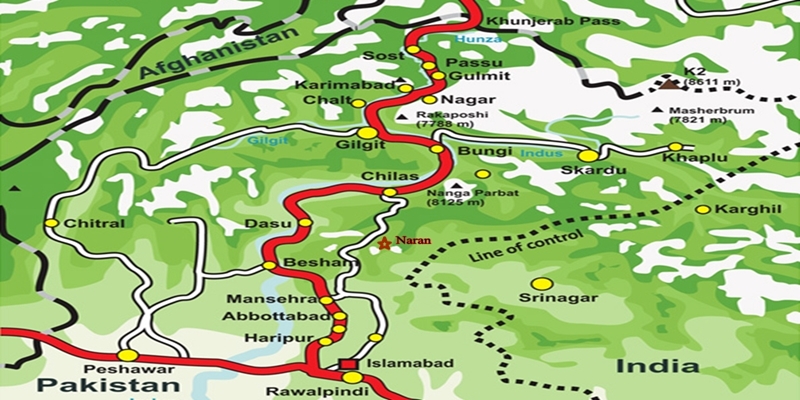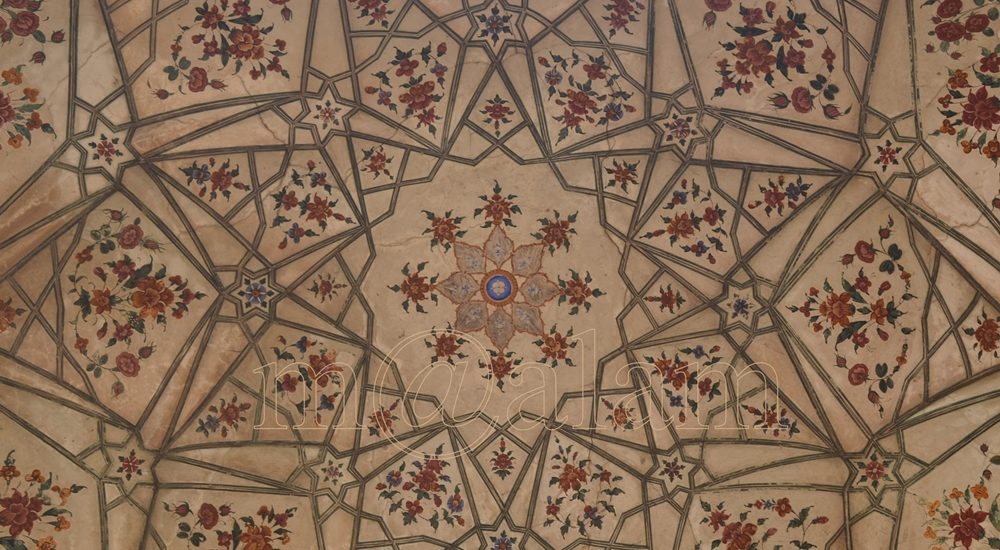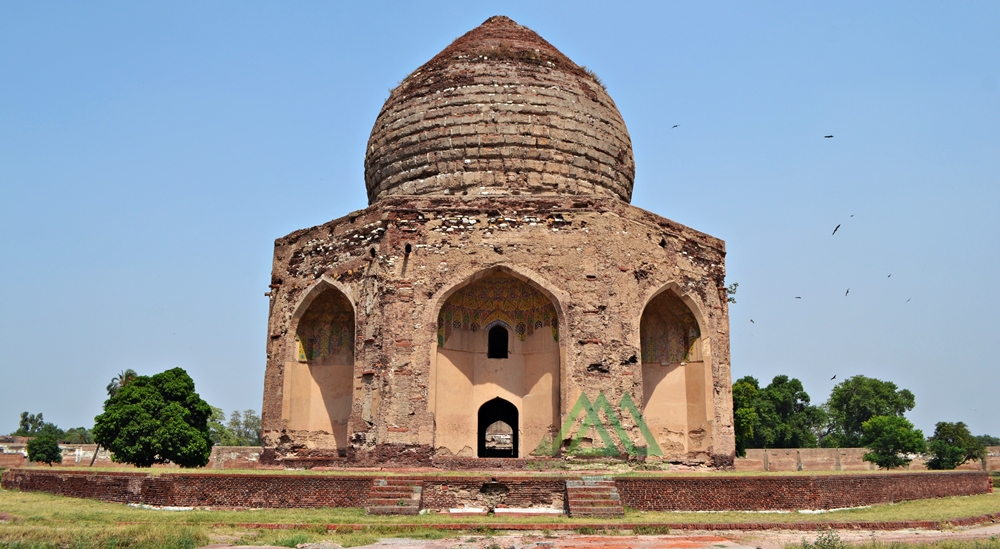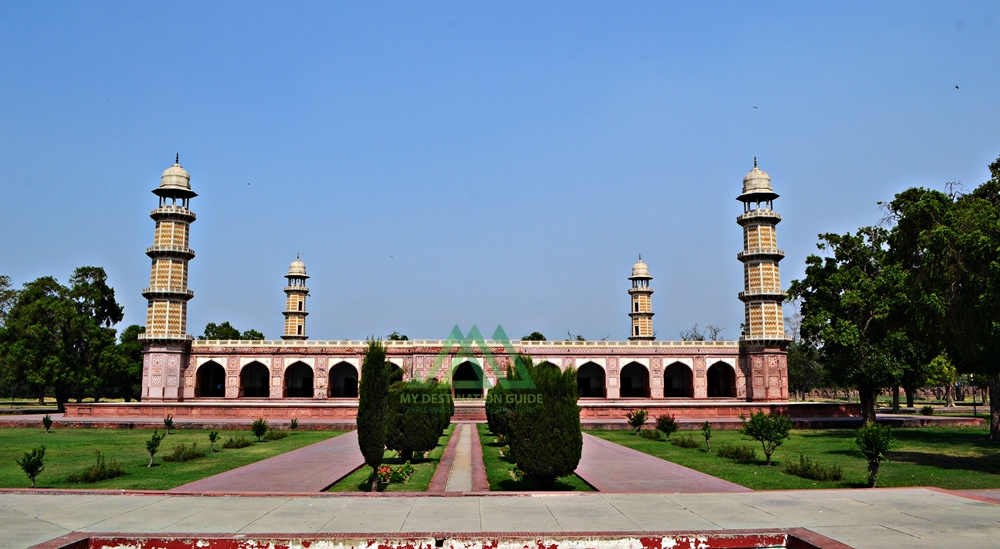Exploring the Legacy of Mughal Emperors: A Glimpse into India’s Imperial Past
The history of India is adorned with tales of dynasties, conquests, and cultural richness. Among the many chapters that illuminate this historical tapestry, The Mughal Empire, a Muslim ruling family that governed most of northern India from early 1526 to 1857, stands out as one of the most illustrious and influential periods. Spanning over three centuries, the reign of the Mughal emperors left an indelible mark on India’s landscape, culture, and society.
Despite being Muslims ruling over a majority Hindu population, the Mughals gained renown for their well-organized government, sophisticated culture, and efforts to integrate Hindus and Muslims into a united Indian state. It’s noteworthy that during Mughal rule, Muslims constituted only about 15 percent of the population.
The Rise of the Mughal Dynasty
The Mughal dynasty stands as one of the longest-reigning dynasties in India, predating the British colonization of the country. From the 16th century to the mid-18th century, the Mughal rulers successfully conquered most of Northern India. It has left an enduring impact on the subcontinent.
The dynasty’s rulers, spanning seven generations, were notably talented and played a crucial role in shaping the course of Indian history. Founded by Babur, a descendant of the ruthless Mongol conqueror Genghis Khan on his mother’s side and the Turkic conqueror Timur (Tamerlane) on his father’s side, the empire’s inception occurred with Babur’s victory over Ibrahim Lodhi at the First Battle of Panipat in 1526. This marked the commencement of the Mughal era in India.
One distinctive feature of the Mughal dynasty was the concerted effort by its emperors to integrate Hindus and Muslims into a unified Indian state. This commitment to inclusivity added a unique dimension to the Mughal era, contributing to the dynasty’s historical significance in India.
Babur (1526–30): The Founder of a Grand Legacy
Sultan Babur, renowned for his military prowess and poetic talents, laid the cornerstone of the Mughal Empire. It was following his legendary triumph over the Lodhi Sultan in 1526. In a remarkable feat, Babur, utilizing 20 cannons, defeated an army twice the size of his own. Despite his brief but impactful reign, he left an indelible mark on India by introducing Persian culture and the art of gardening. It forever altered the country’s landscape.
Babur’s artistic vision is particularly evident in the beautiful Mughal gardens. These gardens, characterized by meticulously designed layouts and flowing watercourses, serve as a lasting testament to his cultural influence.
However, the leadership of Babur was short-lived, as he passed away just two years after establishing the empire. The true sustainer of the Mughal dynasty’s success turned out to be his grandson, who not only expanded Mughal territories but also established a highly efficient governance structure. Babur’s initial triumphs set the stage for the grand legacy that would be further realized and expanded upon by his successors.
Humayun: (1530–40 and 1555–56)
Babur’s son, Humayun, ascended to the Mughal throne after his father’s reign. However, his rule faced challenges, and in 1540, he lost control of the empire to the Suri Dynasty. Humayun’s brief displacement was a result of his defeat by Sher Shah Suri, a ruler considered more effective due to his military successes and governance.
In 1555, Humayun managed to reclaim the Mughal throne, marking the restoration of the dynasty. Unfortunately, his reign was short-lived, as he died the following year due to a fall. Humayun’s youth and lack of experience contributed to his reputation as a less effective ruler compared to Sher Shah Suri.
Despite the challenges, Humayun’s restored rule in 1555 proved to be more unified and effective than his initial reign from 1530 to 1540. His efforts laid the groundwork for the future success of the Mughal Empire. Humayun left behind a unified empire for his son, Akbar, who would go on to become one of the most celebrated and influential rulers in Mughal history.
Akbar the Great (1556–1605): A Visionary Ruler
Akbar the Great, one of the most revered emperors in the Mughal dynasty, assumed the throne at a young age, ushering in what is often hailed as the “Golden Age of the Mughal Empire.” His reign, characterized by political stability, religious tolerance, and administrative reforms, played a pivotal role in shaping the destiny of the Mughal dynasty.
The son of Humayun, Akbar successfully consolidated the Mughal Empire through persistent military campaigns, annexing vast territories in northern and central India. As part of his legacy, he constructed the new capital, Fatehpur Sikri, near Delhi. Akbar, while remaining a devout Muslim, demonstrated a unique interest in various religions, fostering religious discussions among Hindus, Parsis, Christians, and Muslims.
Akbar’s visionary governance extended to political, administrative, and military structures, establishing a foundation that endowed the empire with stability and longevity. His inclusive approach to harmonizing India’s diverse religious and cultural traditions left an enduring impact on the nation’s social fabric. This period witnessed extensive commercial activity, contributing to significant wealth through trade and textile production.
By the early seventeenth century, the Mughals presided over one of the world’s most populous and affluent empires in world history, a testament to the far-reaching influence of Akbar’s enlightened rule.
Jahangir (1605–27): The Patron of Arts
Jahangir, renowned for his deep appreciation of art and culture, carried forward the rich legacy established by his father, Akbar. During his reign, he continued the administrative system and policy of religious tolerance towards Hinduism that characterized Akbar’s rule. Jahangir’s era witnessed a vibrant flourishing of Mughal miniature paintings, and to further support artistic endeavors, he founded the Nur-ud-Din Jahangir Art Academy.
Notably, Jahangir’s love for botany manifested in the compilation of the “Minto Codex,”. It is an extensive record documenting the diverse flora and fauna of India. His reign became a golden period for the arts, with painting particularly thriving under his patronage as he supported numerous artists.
Jahangir ascended the throne after the death of Akbar, and his reign marked a continuation of his father’s open-minded approach to governance. However, there were periods when his wife, Nur Jahan, reportedly ruled on his behalf, especially when the emperor began to neglect his affairs in the court. Coins were issued in her name during Jahangir’s reign, highlighting her significant influence.
During Jahangir’s rule in 1611, the British established the first factories in India, marking the initiation of European influence on the subcontinent. Jahangir’s reign, with its cultural patronage and openness, contributed to a distinctive chapter in the Mughal Empire’s history.
Shah Jahan (1628-58): The Builder of Marvels
Shah Jahan, the fifth Mughal emperor succeeding Jehangir, may not have been as open-minded as Akbar or Jehangir, but he was far from orthodox. His reign was characterized by a patronage of the arts in all its forms, making India a flourishing center for arts, crafts, and architecture. The period was marked by economic stability and prosperous trade.
Shah Jahan, renowned for his architectural vision, commissioned some of India’s most iconic structures. Foremost among these is the Taj Mahal, an enduring symbol of eternal love. UNESCO recognized it as a World Heritage Site in 1983. Additionally, Shah Jahan’s construction of the Red Fort in Delhi, designated a World Heritage Site in 2007, served as the Mughal rulers’ residence after he decided to shift the capital from Agra to Delhi.
The Shalimar Gardens, a 40-acre masterpiece built by Shah Jahan in 1642, was declared a UNESCO World Heritage Site in 1981. His rule epitomized opulence and grandeur, culminating in the zenith of the Mughal Empire’s influence.
Other architectural wonders attributed to Shah Jahan include the Red Fort in Delhi and the Jama Masjid. Despite his accomplishments, Shah Jahan’s later years were marked by a succession war with his son Aurangzeb, who emerged victorious. Placed under house arrest during his illness, Shah Jahan, during this period, commissioned the construction of the Taj Mahal, a testament to enduring love and artistic splendor.
Aurangzeb (1658–1707): The Last Great Mughal
Aurangzeb was the sixth and final great Mughal emperor. He ruled with an iron grip over the Indian subcontinent for an extensive 49-year period. While his reign witnessed the empire’s expansion to its greatest territorial extent, it was also marked by internal strife due to his rigid policies.
Aurangzeb’s attempts to impose orthodox Sunni Islam. However, his lack of tolerance for other faiths has sparked considerable debate among historians. Notably, he instituted Sharia Law in the Indian subcontinent and reintroduced the jizya, a tax abolished by Akbar, to be paid by non-Muslims in a Muslim state. His numerous military expeditions aimed at territorial expansion. It included the annexation of the Deccan kingdoms of Vijayapura (Bijapur) and Golconda, resulting in the empire reaching its maximum size.
Frequent clashes with the Maratha warrior Shivaji and Aurangzeb’s intolerance of other religions, including the destruction of Hindu schools and temples and persecution of Sikhs, created tensions that eventually led to the dissolution of the empire. By the time of Aurangzeb’s death in 1707, his authority was disputed throughout his dominions, contributing to the decline of the once-great Mughal Empire.
The Lesser Known Later Mughal Era
The period following Aurangzeb’s rule is often referred to as the Later Mughal era. During the period the successors of Aurangzeb faced significant challenges leading to the decline of the once-mighty Mughal Empire in India. This phase in Mughal history is less prominent compared to the reigns of the Great Mughals like Akbar, Jahangir, and Shah Jahan.
Various factors contributed to the weakening and eventual fragmentation of the empire during this time. Dynastic warfare among the heirs of Aurangzeb led to internal conflicts, weakening the central authority. Sectional rivalries further exacerbated the situation, as different regions of the empire started asserting greater autonomy.
Moreover, the Mughal Empire faced external threats from warlords and invaders. The rise of powerful regional rulers and the emergence of new political entities added to the complexity of the situation. The empire began losing control over its provinces, and regional powers started to assert their independence.
In 1803, a significant turning point occurred when the British East India Company took control over Delhi. It was the last remaining Mughal territory. This marked the end of Mughal sovereignty and the beginning of British dominance in India. The British gradually expanded their influence, and by the mid-19th century, they had established the British Raj, consolidating their control over the Indian subcontinent.
The decline of the Mughal Empire led to the subsequent establishment of British rule in India. It represented a crucial chapter in Indian history, marking the end of one era and the beginning of another. Resultantly, it shaped the course of the subcontinent for the next century.
The Later Mughal Empire
Bahadur Shah I (1707–1712):
- His reign marked the beginning of a decline in the Mughal Empire due to a lack of effective leadership.
Jahandar Shah (1712–1713):
- An unpopular and incompetent ruler who served as a titular figurehead.
Furrukhsiyar (1713–1719):
- His reign saw the rise of the manipulative Syed Brothers.
- He granted the English East India Company duty-free trading rights for Bengal in 1717.
- The Firman (decree) was opposed by Murshid Quli Khan.
Rafi Ul-Darjat (1719):
- The 10th Mughal Emperor was proclaimed Badshah by the Syed Brothers.
Rafi Ud-Daulat (1719):
- Briefly held the position of the Mughal emperor in 1719.
- Muhammad Ibrahim (Claimant to the throne) 1720:
- Attempted to seize the throne at the behest of the Syed Brothers but was not successful.
Muhammad Shah (also called Rangeela) 1719-1748:
- Removed the influence of the Syed Brothers.
- Faced challenges from the Marathas and suffered losses in the Deccan and Malwa.
- Experienced the invasion of Nadir-Shah of Persia in 1739.
Ahmad Shah Bahadur (1748–1754):
- Son of Muhammad Shah faced the Mughal Civil War and was defeated by the Marathas at Sikandarabad.
Alamgir II (1754–1759):
- Murdered by a conspiracy involving Imad-Ul-Mulk and Maratha associate Sadashivrao Bhau.
- Shah Jahan III (1759-1760):
- Overthrown after the Third Battle of Panipat by Prince Mirza Jawan Bakht.
Shah Alam II (1760–1806):
- Fought against the British East India Company during the Battle of Buxar.
- Reformed the Mughal Army under Mirza Najaf Khan, considered one of the last effective Mughal Emperors.
Akbar Shah II (1806–1837):
- Designated Mir Fateh Ali Khan Talpur as the new Nawab of Sindh.
- Faced a brief dispute with the British East India Company. It leads to the removal of his imperial name from official coinage.
Bahadur Shah II 1837–1857
Bahadur Shah II, who reigned from 1837 to 1857, holds the distinction of being the last Mughal Emperor. His reign coincided with a period of significant change and upheaval in India. Following the Indian Rebellion of 1857, also known as the Indian Mutiny or the Sepoy Mutiny, Bahadur Shah II was deposed by the British.
During the mutiny, rebel troops from Meerut captured Delhi. They compelled Bahadur Shah to reluctantly assume nominal leadership of the revolt. However, the rebellion was eventually quelled by the British, marking a turning point in Indian history. As a consequence of the uprising, Bahadur Shah II was exiled to Burma (now Myanmar) along with his family. His removal from power in 1858 symbolically marked the end of the Mughal Empire. It had once been a powerful and influential force in the Indian subcontinent. The British formally annexed India after suppressing the rebellion. It signaled the beginning of direct British rule and the conclusion of the Mughal era.
The Legacy of the Mughal Emperors
The legacy of the Mughal emperors is profound and enduring, extending well beyond the chronological confines of their reigns. Their influence on various aspects of Indian life has left an indelible mark on the country’s identity.
Art, Culture, and Architecture
One of the most prominent contributions lies in the realms of art, culture, and architecture. The Mughals were great patrons of the arts, and their support fostered a cultural renaissance. The architectural marvels of the Mughal era, such as the Taj Mahal and the Red Fort, stand as a testament to their refined taste and architectural prowess. These structures continue to captivate and inspire people worldwide.
Cuisine
Mughal cuisine, characterized by a delightful fusion of Persian and Indian flavors, remains a vibrant part of Indian culinary heritage. The rich and aromatic dishes were introduced during their era. They are still enjoyed and celebrated, showcasing the lasting impact of Mughal gastronomy.
Lasting impact
Beyond tangible creations, the Mughal legacy is woven into the very fabric of Indian history. The narrative of the Mughal emperors reflects a blend of courage, cultural diversity, and dignity. Each emperor, from Babur to Aurangzeb, contributed a unique chapter to the Mughal saga. Babur’s conquests, Akbar’s progressive policies, Jahangir’s patronage of the arts, Shah Jahan’s architectural wonders, and Aurangzeb’s complex rule collectively shaped the course of Indian history.
While acknowledging the glory of the Mughal Empire, it is essential to recognize its imperfections. The complex interplay of power, politics, and cultural exchange during their reigns serves as a testament to the multifaceted nature of history.
As we reflect on this remarkable period, the Mughal Empire stands as a symbol of the enduring power of history. The legacies of the Mughal emperors offer a deeper understanding of the rich heritage bequeathed in today’s India and Pakistan, providing insights into the cultural amalgamation and historical transformations that have shaped the subcontinent over the centuries.










